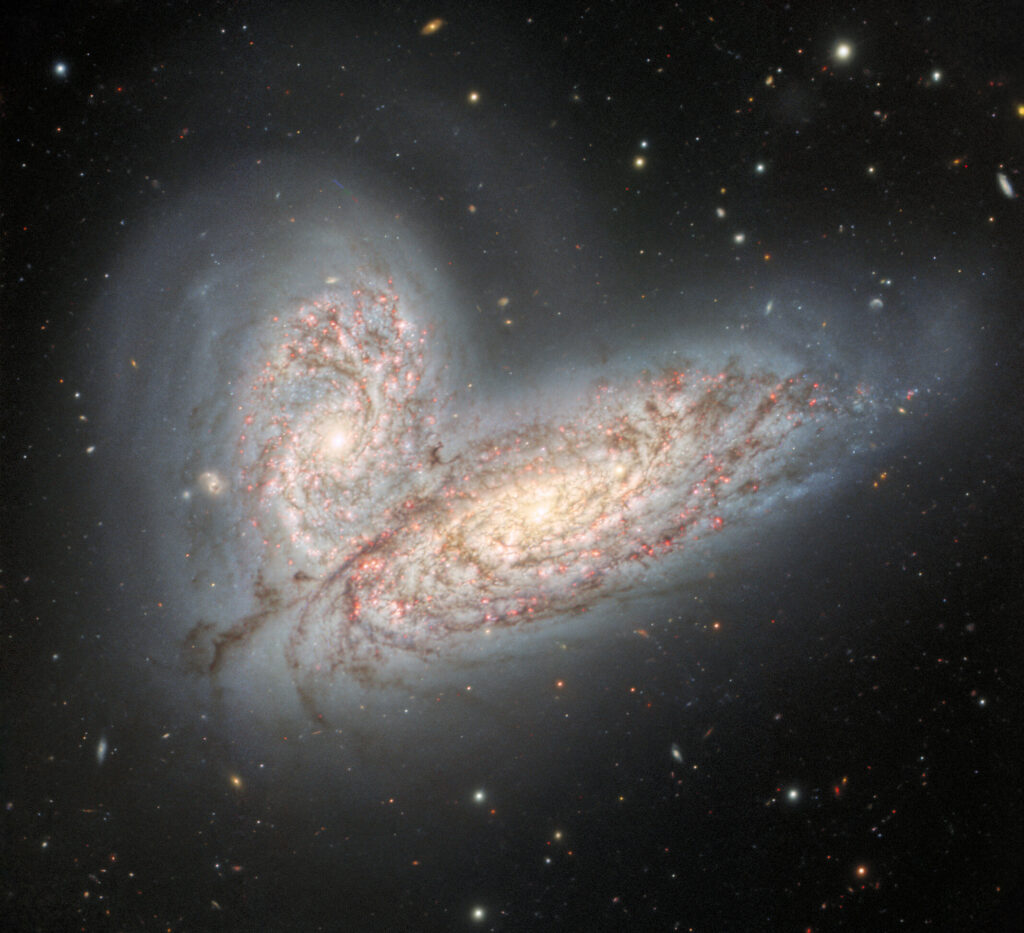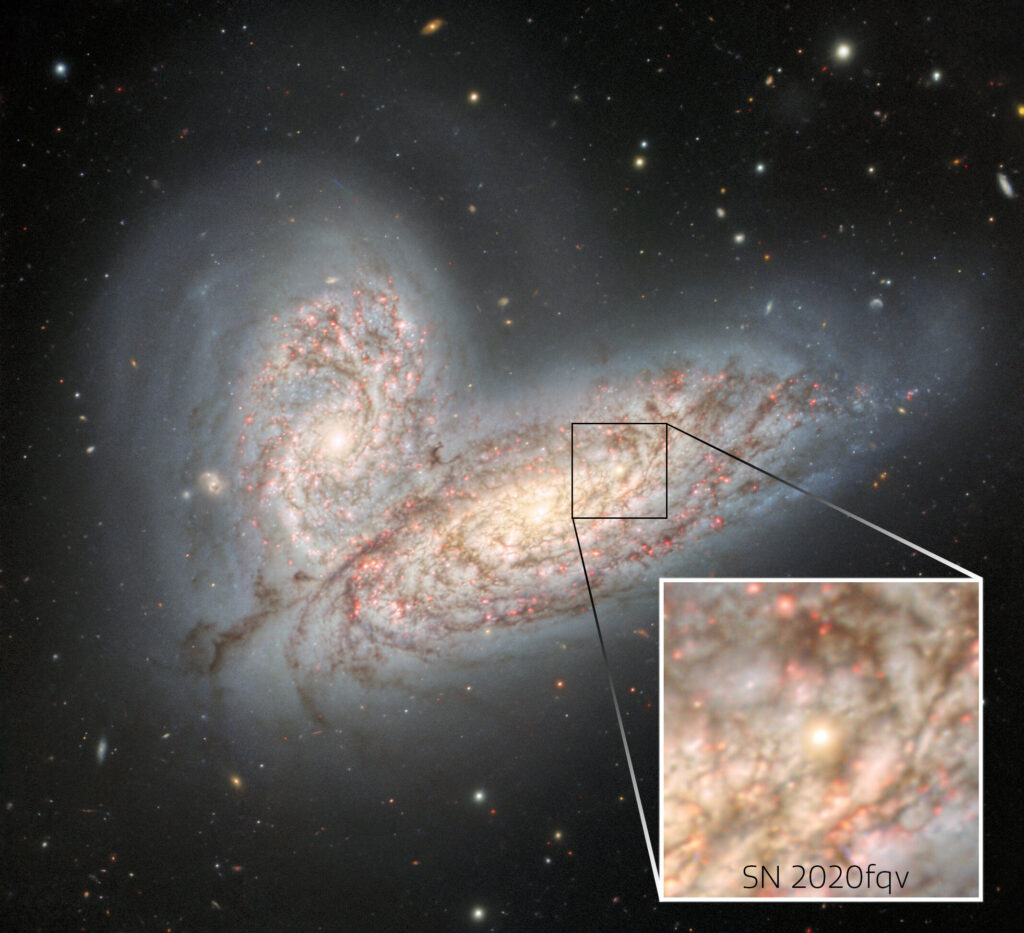Astronomers working on the Gemini North telescope have published a fascinating new image. It demonstrates a pair of interacting spiral galaxies NGC 4568 and NGC 4567, which have begun the process of merging.

NGC 4568 and NGC NGC 4567 are located at a distance of 60 million light-years from the Milky Way in the direction of the constellation Virgo. Currently, their centers are separated by a distance of 20 thousand light-years, which is comparable to the distance between the Earth and the center of the Milky Way. Each galaxy still retains its original shape. However, this will change in the near future.
As NGC 4568 and NGC 4567 approach, tidal forces will distort their majestic structures more and more. Over the next million years, the galaxies will “dance” around each other, gradually forming increasingly narrowing loops. At the same time, under the influence of gravity, giant ribbons consisting of ejected stars and gas will break out of them. Eventually, their original structures will be completely destroyed and NGC 4568 and NGC 4567 will merge into a single elliptical galaxy. According to astronomers, it will take 500 million years.
The processes described above will also be accompanied by the compaction of gas and dust clouds, which will cause a giant outbreak of star formation. Many newborn luminaries will have a large mass and will end their lives with supernova explosions. The Gemini North image shows an example of a similar process. In the inset, you can see the fading afterglow of the supernova SN 2020fqv, which was observed in 2020. It broke out as a result of the collapse of a supermassive star.

By the time NGC 4568 and NGC 4567 complete their merger, they will have already used up most of the gas. Therefore, the newly formed elliptical galaxy will exhibit minimal star formation and mainly consist of old low-mass luminaries and ancient globular clusters.
It is also worth noting that the merger of NGC 4568 and NGC 4567 can be considered as a visualization of the future that awaits our galaxy. In about 5 billion years, it will begin merging with the Andromeda galaxy. Eventually, it will culminate in the appearance of a giant elliptical galaxy, which will also be mainly populated by old stars.
According to https://noirlab.edu
Follow us on Twitter to get the most interesting space news in time
https://twitter.com/ust_magazine

